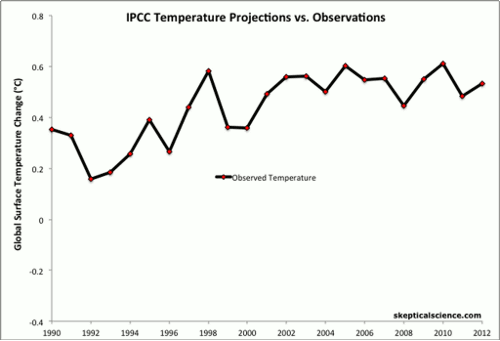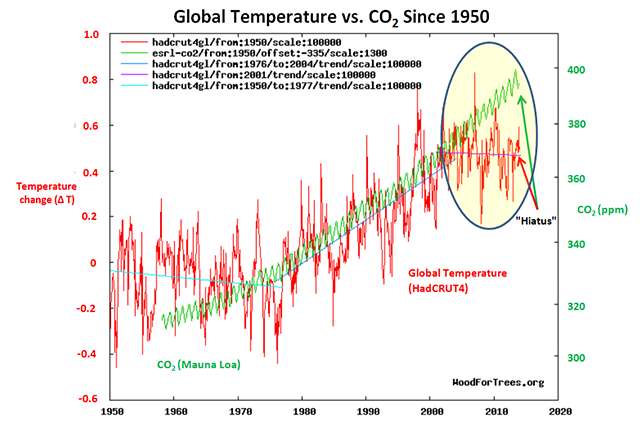Good new articles on energy.
https://www.forbes.com/sites/michaelshellenberger/2018/05/08/we-dont-need-solar-and-wind-to-save-the-climate-and-its-a-good-thing-too/#59adedc9e4de
https://hbswk.hbs.edu/item/op-ed-why-private-investors-must-fund-new-nuclear-power-right-now
TerraPower, whose lead investor is Microsoft founder Bill Gates, and ThorCon Power, whose lead investor is Acadian Asset Management founder Gary Bergstrom, have publically committed to goals on cost (< $0.07/kwh), availability (full-scale demonstration by 2025) and deployment rates (ramping installations toward the 100 GWe/year of new capacity that the world is anticipated to need by 2030, according to the EIA) that are ambitious enough to actually make a difference to the world’s carbon emissions. To appreciate the pace required to beat fossil fuels in Asia, you should look at the updates recently announced by ThorCon Power in Indonesia.
http://thorconpower.com/news
South Australia hit $14,000MWh on some charts today, again. The reason why specifically doesn't matter, we know its no coincidence that the most expensive electricity in the world comes from states with the largest wind-turbine installation in the world.
One thing I been thinking is how those LCE charts cheat for wind, as they only include the wind cost price based on when the wind is blowing and don't include the costs they inflict on the user for its extreme intermittency.. Nuclear, on the other hand, has all its baggage added into the price including the hefty insurance costs, like a worst case scenario radiation meltdown/fallout to nearby cities.
Wind can just pop in and out for 1 hour of wind-generation and disappear without notification leaving a $14000MWh spot price which is generally blamed on everything else like the fossil fuels backup generation instead of the wind.
That really doesn't seem fair.
https://en.wikipedia.org/wiki/Cost_of_electricity_by_source#United_States
To me the real test of "levelized cost of electricity" (LCOE) can be drawn together by looking at states that have tried to implement the same energy source technology and what the end price the consumer pays.
This screams the fact that wind is incredibly expensive if you include its intermittency/unreliability support costs.
No one in the world denies South Australia has the most expensive electricity in the world. And I think its just madness to claim its a coincidence that also utilizes wind more than any country in the world and not blame wind energy. If only SA actually had an impressive co2 grams per KWh but its horrible at around 450g per KWh average vs Frances 30grams on average.

South Australian energy spot price charts were yesterday as high as $14,000 MWh depending on the source, obviously, something went wrong for 1 hour, this has been a weekly occurrence lately. Electricitymap weirdly enough seems to be the most honest in this area.
This happened last week or the week before where SA used their diesel generators, but despite the emergency never elected to discharge above 30MW on the Hornsdale-power-reserve-Tesla battery which can discharge up to 100MW for emergencies (but never has).
One thing I find annoying about the Hornsdale power-reserve (SA Tesla battery) is that it is also tweaked to never show the full price of electricity in spot $MWh. Even though it was super high today and you can even visually see the line blast above the max level on the chart, the numbers its willing to display never go anywhere near multi-$1000 MWh price, as the official spot price even though they do on more official sources. Instead, its highest price for the whole day is $349.95 per MWh as far as the Hornsdale-Tesla battery website is concerned.
This also happened the other week 26th of April, when SA elected to use around 200MW of diesel generated electricity for a few hours rather than touch its Tesla battery for anything more than 30MW.
https://endless-sphere.com/forums/download/file.php?id=233086
https://pbs.twimg.com/media/Db2dbNVVwAAewa1.jpg
So its another example of stuff being tweaked to make it look less bad or better than it really is.
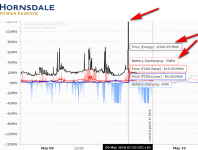
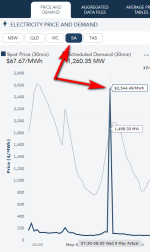
All up this is not even news, so far its been a "good to normal week" for South Australia in electricity, but in countries that don't rely on wind it would be considered hell and totally unacceptable.
This is why I think a better LCOE model needs to be created because wind not including its general wider effects on electricity as a whole like what you get in a final retail bill is not realistic.
The "
its not wind-generators fault because the wind stopped suddenly, so no wind at the time thus technically its everyone else's fault like fossil fuel generators" is madness, but this is quite literally the world we live in.
If you took a taxi to the airport for a non-refundable flight to Hawaii and the taxi suddenly stopped halfway for whatever reason (like no wind-energy), and you had to walk the rest of the way to the airport, you wouldn't consider it good value for money. But if you didn't tell the whole story to someone and they saw your taxi receipt cost to the airport was half the normal price they would be saying well done on saving some money..
Or alternatively, instead of walking the rest of the way to the airport, you had a system were other taxi drivers who were powered by fossil fuels, were not allowed to drive you to the airport unless the wind-powered-car stopped, they would then show up to drive you the rest of the way. You would probably find they would ask for a lot of money to do this, why? Because they would be forced to sit in their cars all day waiting for that opportunity for the wind powered-car to stop working, this would require a painful completely unprofitable long and frustrating wait between chances to make any money, like a lot of Taxi/Uber drivers who lease their car, they would be sitting there while paying for a cars lease/bank-loan-interest-repayments/upkeep and not actually allowed to drive anyone unless the wind-powered-car suddenly failed, the only way to make it viable is to increase the price.
This seems to be one of the major factors to increased costs, where you at minimum need to double or even x5 the infrastructure to provide the same service, I think really it's around x5 the infrastructure to get remotely the same amount of energy generation. You have a wind-farm thats capacity factor is 20%, so you build 5 wind-farms, then you need 5 more transmission towers to carry the power. And as this article states, transmission lines are expensive to build and maintain and add up quickly, folks used to hate power-lines but now turn a blind eye to new ones because they think its helping the environment.
https://www.forbes.com/sites/michaelshellenberger/2018/04/25/yes-solar-and-wind-really-do-increase-electricity-prices-and-for-inherently-physical-reasons/#311f323917e8
You can build x5 to deal with low capacity factor in wind but the other thing to note is you often just don't get the power from wind even if it's massively spread out over a long distance. Australia for example at times when there is little wind across the WHOLE of Australia at the same time only generate a net 50MW of power for around 5000MW of installed wind-capacity (so 1%)
Quote from article
"all the wind farms currently across the mainland NEM are contributing, in aggregate, less than 50MW."
http://www.wattclarity.com.au/2018/05/a-timely-reminder-of-the-need-for-much-more-diversity-in-wind-harvest-patterns/
*Add/Edit*
I was thinking it was a particularly cold northern hemisphere winter this year so I figured the photosynthesis activity must have been particularly low. Looking at NOAA website for GHG measurements/charts suggests this was the case.
During the peak of the winter at this particular measurement site, they hit a nice healthy co2 470ppm for carbon dioxide.

Australia had their federal budget announced last night for 2018 including tax cuts etc but some were crying there's nothing mentioned of money to fight Climate Change
http://www.abc.net.au/news/2018-05-08/federal-budget-2018-winners-losers/9738982
But why would there be, unless they put a nuclear reactor in the budget nothing would help anyway, until mainstream media does a better job telling folks what actually lowers co2 there's no point.
South Australia was emitting around x19times more co2 than France all budget day.
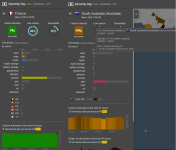
Report says, European Union carbon emissions from burning fossil fuels increased in 2017
https://www.reuters.com/article/us-eu-carbon-climatechange/eu-carbon-emissions-rose-in-2017-eurostat-idUSKBN1I50YU








